1,1,4,4-TETRAPHENYL-1,3-BUTADIENE
Synonym(s):TPB
- CAS NO.:1450-63-1
- Empirical Formula: C28H22
- Molecular Weight: 358.47
- MDL number: MFCD00004766
- EINECS: 215-914-7
- SAFETY DATA SHEET (SDS)
- Update Date: 2024-12-18 14:08:52

What is 1,1,4,4-TETRAPHENYL-1,3-BUTADIENE?
Chemical properties
WHITE TO SLIGHTLY YELLOW NEEDLE-LIKE CRYSTALS
The Uses of 1,1,4,4-TETRAPHENYL-1,3-BUTADIENE
1,1,4,4-Tetraphenyl-1,3-butadiene is used as a wavelength shifter. It is also used as an electroluminescent dye, which glows blue with an electroluminescent dye.
The Uses of 1,1,4,4-TETRAPHENYL-1,3-BUTADIENE
Primary fluor or wavelength shifter in soluble scintillators.
What are the applications of Application
1,1,4,4-Tetraphenyl-1,3-butadiene is a compound used for scintillation
Properties of 1,1,4,4-TETRAPHENYL-1,3-BUTADIENE
| Melting point: | 207-209 °C(lit.) |
| Boiling point: | 425.89°C (rough estimate) |
| Density | 1.1108 (estimate) |
| refractive index | 1.8780 (estimate) |
| storage temp. | 2-8°C |
| solubility | Soluble in ethanol, benzene, chloroform, tolune and acetic acid. |
| form | Needle-Like Crystals |
| color | White to slightly yellow |
| BRN | 1914229 |
| CAS DataBase Reference | 1450-63-1(CAS DataBase Reference) |
| EPA Substance Registry System | Benzene, 1,1',1'',1'''-(1,3-butadiene-1,4-diylidene)tetrakis- (1450-63-1) |
Safety information for 1,1,4,4-TETRAPHENYL-1,3-BUTADIENE
| Signal word | Warning |
| Pictogram(s) |
 Exclamation Mark Irritant GHS07 |
| GHS Hazard Statements |
H315:Skin corrosion/irritation H319:Serious eye damage/eye irritation H335:Specific target organ toxicity, single exposure;Respiratory tract irritation |
| Precautionary Statement Codes |
P261:Avoid breathing dust/fume/gas/mist/vapours/spray. P264:Wash hands thoroughly after handling. P264:Wash skin thouroughly after handling. P271:Use only outdoors or in a well-ventilated area. P280:Wear protective gloves/protective clothing/eye protection/face protection. P302+P352:IF ON SKIN: wash with plenty of soap and water. P305+P351+P338:IF IN EYES: Rinse cautiously with water for several minutes. Remove contact lenses, if present and easy to do. Continuerinsing. |
Computed Descriptors for 1,1,4,4-TETRAPHENYL-1,3-BUTADIENE
1,1,4,4-TETRAPHENYL-1,3-BUTADIENE manufacturer
Inventichem
1Y
Phone:+91-7569521157
Whatsapp: +91 7569521157
product: 1450-63-1 1,1,4,4-Tetraphenyl-1,3-butadiene (TPB) 98%
New Products
(S)-3-Aminobutanenitrile hydrochloride 4-Methylphenylacetic acid N-Boc-D-alaninol N-BOC-D/L-ALANINOL Tert-butyl bis(2-chloroethyl)carbamate 3-Morpholino-1-(4-nitrophenyl)-5,6-dihydropyridin- 2(1H)-one Furan-2,5-Dicarboxylic Acid Tropic acid 1-Bromo-3,5-Di-Tert-Butylbenzene S-2-CHLORO PROPIONIC ACID ETHYL ISOCYANOACETATE 2-Bromo-1,3-Bis(Dimethylamino)Trimethinium Hexafluorophosphate 4-IODO BENZOIC ACID 3-NITRO-2-METHYL ANILINE 1-(2,4-DICHLOROPHENYL) ETHANAMINE (2-Hydroxyphenyl)acetonitrile 4-Bromopyrazole 2-(Cyanocyclohexyl)acetic acid 4-methoxy-3,5-dinitropyridine 1-(4-(aminomethyl)benzyl)urea hydrochloride 2-aminopropyl benzoate hydrochloride diethyl 2-(2-((tertbutoxycarbonyl)amino) ethyl)malonate tert-butyl 4- (ureidomethyl)benzylcarbamate Ethyl-2-chloro((4-methoxyphenyl)hydrazono)acetateRelated products of tetrahydrofuran
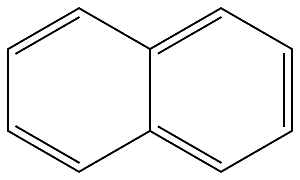

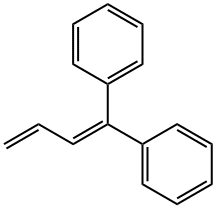
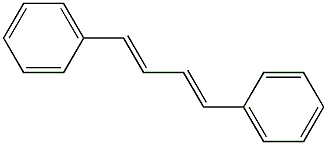
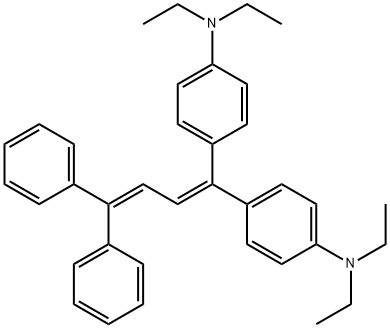


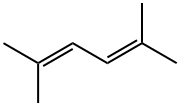
You may like
-
 1450-63-1 1,1,4,4-Tetraphenyl-1,3-butadiene (TPB) 98%View Details
1450-63-1 1,1,4,4-Tetraphenyl-1,3-butadiene (TPB) 98%View Details
1450-63-1 -
 1,1,4,4-Tetraphenyl-1,3-butadiene CAS 1450-63-1View Details
1,1,4,4-Tetraphenyl-1,3-butadiene CAS 1450-63-1View Details
1450-63-1 -
 1,1,4,4-Tetraphenyl-1,3-butadiene, ≥99% CAS 1450-63-1View Details
1,1,4,4-Tetraphenyl-1,3-butadiene, ≥99% CAS 1450-63-1View Details
1450-63-1 -
 1,1,4,4-Tetraphenyl-1,3-butadiene, suitable for scintillation, ≥99% CAS 1450-63-1View Details
1,1,4,4-Tetraphenyl-1,3-butadiene, suitable for scintillation, ≥99% CAS 1450-63-1View Details
1450-63-1 -
 1,1,4,4-Tetraphenyl-1,3-butadiene CAS 1450-63-1View Details
1,1,4,4-Tetraphenyl-1,3-butadiene CAS 1450-63-1View Details
1450-63-1 -
 1975-50-4 98%View Details
1975-50-4 98%View Details
1975-50-4 -
 14714-50-2 (2-Hydroxyphenyl)acetonitrile 98+View Details
14714-50-2 (2-Hydroxyphenyl)acetonitrile 98+View Details
14714-50-2 -
 118753-70-1 98+View Details
118753-70-1 98+View Details
118753-70-1
Statement: All products displayed on this website are only used for non medical purposes such as industrial applications or scientific research, and cannot be used for clinical diagnosis or treatment of humans or animals. They are not medicinal or edible.